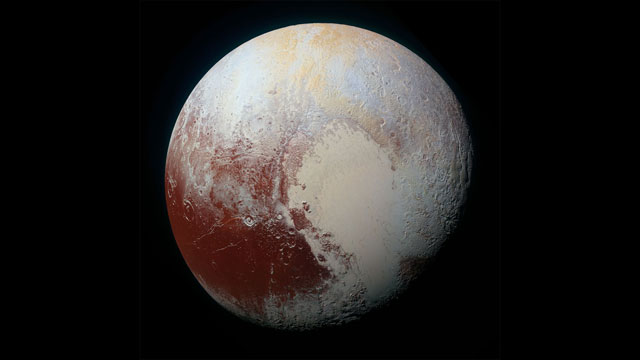
‘Penitentes’ are structures of hardened snow or ice that are shaped like short towers (a few meters high) facing the direction of the sun. They are formed from erosions, and are typically found in high-altitude locations like the Andes Mountains. The name ‘penitente’ was derived from the act of being penitent — the formations look like a group of people on their knees, praying and doing penance for their sins.
For the longest time, scientists thought that penitentes were exclusive to our planet. It turns out they were wrong.
First spotted by NASA’s New Horizons spacecraft when it made its historic (and long-awaited) Pluto flyby in July 2015, scientists were initially unable to comprehend what they were seeing — ice ridges that looked like penitentes, but were much too high to be defined as such. Besides, this was Pluto. How can it possibly have such Earth-like structures?
By combining the functions of a model similar to what meteorologists use to make weather forecasts, and doing computer simulations, a team of researchers led by Dr. John Moores from York University, Toronto was eventually able to explain what the structures were. They were indeed penitentes – Pluto’s version.
In contrast with those on Earth, Pluto’s penitentes are composed of methane and nitrogen. They’re also way bigger — approximately 500 meters tall — and spaced farther apart.
Even with these differences, the team is certain about their findings — the computer simulations they did that came up with the penitente formations couldn’t have been wrong.
The ridges were found in a region in Pluto called Tartarus Dorsa. And categorizing these ridges as penitentes imply that the formation of these structures requires some kind of atmosphere, which is why there have been none found in other icy and airless cosmic bodies. There’s also the matter of size, which the team also has an explanation for – different environments give rise to features with different scales.
As Dr. Moores said in a statement they issued: “This gargantuan size is predicted by the same theory that explains the formation of these features on Earth. In fact, we were able to match the size and separation, the direction of the ridges, as well as their age — three pieces of evidence that support our identification of these ridges as penitentes.”
He went on to say that even with Pluto’s very different environment — it’s much colder, the air is much thinner, the sun is dimmer, and snow and ice are composed of methane and nitrogen instead of water — the same laws of nature apply. Which also means that a more extensive search might reveal the presence of similar structures elsewhere in our solar system and other parts of the universe.
The findings of the study have been published online on January 4, 2017 through the journal Nature.
- Bulenox: Get 45% to 91% OFF ... Use Discount Code: UNO
- Risk Our Money Not Yours | Get 50% to 90% OFF ... Use Discount Code: MMBVBKSM
Disclaimer: This page contains affiliate links. If you choose to make a purchase after clicking a link, we may receive a commission at no additional cost to you. Thank you for your support!




Leave a Reply